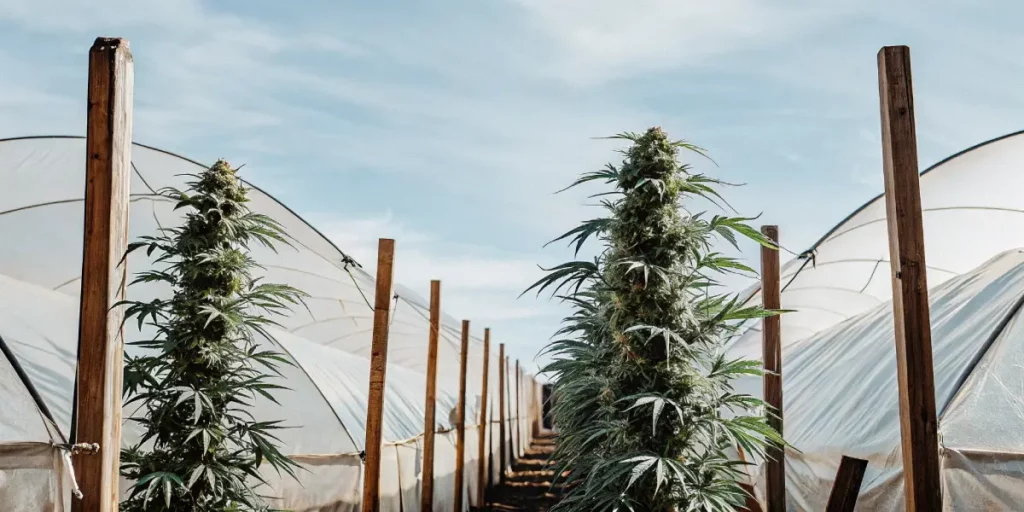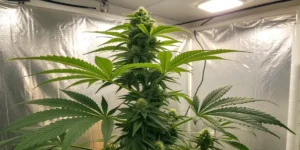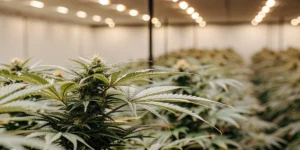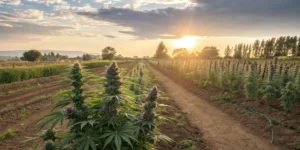Growing Mother Gorilla cannabis is a rewarding endeavor that requires understanding the specific needs of this robust strain. With roots in classic genetics, this hybrid strain combines parent strains GG #4 and Reina Madre, resulting in a plant that flourishes both indoors and outdoors. To achieve the best yield, growers should start by selecting high-quality seeds from a reputable source to ensure genetic consistency and vitality.
The initial step in growing this variety involves germinating the seeds. This can be done using the paper towel method or planting directly into a growing medium. Once germinated, transplant the seedlings into their initial pots, ensuring ample space for root development. During the vegetative stage, maintain a lighting schedule of 18 hours of light and 6 hours of darkness using fluorescent lamps or LED grow lights for optimal growth.
These plants benefit from nutrient-rich soil with excellent drainage. Consider using a mixture of potting soil, perlite, and coco coir to achieve the right balance. During the vegetative phase, provide nutrients high in nitrogen, while during flowering, switch to a formula higher in phosphorus and potassium. Regularly monitor pH levels, keeping the range between 6.0 and 7.0 to encourage healthy nutrient uptake.
When the plants reach the flowering stage, usually after 8–10 weeks, reduce the light schedule to 12 hours on and 12 hours off to stimulate bud production. This strain will typically thrive in temperatures ranging from 70–85°F (21–29°C). Ensure adequate airflow and humidity control, aiming for a relative humidity of 40–50% to reduce the risk of mold during flowering.
Harvesting at the right time is crucial for maximizing potency and flavor. Watch for the trichomes to change from a milky white to an amber hue, indicating readiness. After harvesting, cure the buds properly by drying them slowly in a dark, cool place with adequate ventilation. This careful post-harvest process enhances the terpene profile, ensuring a rich, aromatic final product.
Strain Overview: Traits, Effects & Genetics
Mother Gorilla is a captivating cannabis strain that has garnered attention among enthusiasts for its unique combination of effects and resilient growing traits. This hybrid strain is renowned for its potent blend of cerebral and physical experiences, making it a versatile choice for recreational users seeking a balanced high. Known for its uplifting effects, it often induces feelings of euphoria and creativity, which are complemented by a calming body sensation—making it an excellent choice for both daytime and evening use.
In terms of its physical traits, this variety stands out with its dense, resin-coated buds that exhibit a vibrant mix of green and purple hues. The plant itself is moderately tall and bushy, which is typical of many hybrid strains. Its buds release a pungent aroma that combines earthy, sweet, and woody notes with a hint of spice. This aromatic profile carries over to its flavor, which is a delightful blend of sweetness accented by undertones of citrus and pine. When grown under optimal conditions, it can deliver a generous yield, making it an attractive option for both novice and experienced cultivators.
Genetically, this strain is a result of crossing several well-regarded varieties, bringing together the best qualities of each. It traces its lineage back to Gorilla Glue #4, famously known for its sticky resin and powerful effects, and a classic Queen Mother, which contributes to its vibrant terpene profile and robust growth characteristics. The combination of these parent strains has resulted in a balanced hybrid that showcases a rich cannabinoid profile, with elevated levels of THC and a spectrum of terpenes that contribute to its distinctive aroma and taste. The genetic background ensures that it remains adaptable and resilient, offering a gratifying cultivation experience.
Overall, this hybrid stands as a testament to careful breeding and selection, offering users a fulfilling experience both in consumption and cultivation. Its well-rounded effects, coupled with a striking appearance and rewarding yield, make it a popular choice for those looking to explore the potential of hybrid cannabis strains. Whether you’re drawn to its rich genetic background or its invigorating effects, this strain promises to deliver on various fronts.
Optimal Environment to Grow Mother Gorilla Successfully
Mother Gorilla is a robust and resilient cannabis strain, but like all cannabis plants, it thrives best under specific environmental conditions. To successfully cultivate this robust cannabis strain, growers should ensure the plant receives the optimal balance of light, water, temperature, humidity, and nutrients. Starting with light, this variety demands plenty of it; indoor growers should aim for around 18 to 20 hours of light per day during the vegetative stage, reducing it to about 12 hours when flowering.
Temperature is another crucial factor in growing this plant. It prefers a warm climate, with ideal daytime temperatures ranging between 70 to 85 degrees Fahrenheit (21 to 29 degrees Celsius). While it’s tolerant to slight fluctuations, consistently maintaining temperatures within this range will help avoid stress and promote healthy growth. Nighttime temperatures should be slightly lower, but not below 60 degrees Fahrenheit (15 degrees Celsius) to avoid stunting the plant’s development.
Humidity control is also vital. During the early vegetative stage, higher humidity levels of 55–70% are recommended as they mimic the natural environment in which cannabis seedlings thrive, helping them to develop strong roots. As the plant transitions to the flowering stage, gradually decreasing the humidity to around 40–50% will minimize the risk of mold and mildew, safeguarding the buds’ integrity and quality.
A nutrient-rich growing medium is essential for robust development. This strain benefits from a balanced diet of macronutrients (nitrogen, phosphorus, and potassium) and micronutrients, tailored to its growth stage. In the vegetative stage, nitrogen-rich fertilizers can encourage leafy growth, while in the flowering stage, phosphorus and potassium will support bud development. Regularly monitoring and adjusting the pH level of your soil or hydroponic setup, keeping it between 6.0 and 7.0, is crucial to ensure efficient nutrient uptake.
Watering requires careful attention as overwatering or underwatering can significantly impact growth and yield. The best practice is to allow the soil to dry out between watering sessions, encouraging strong root development. By maintaining well-drained soil and practicing deep watering techniques, growers can achieve a consistent moisture balance, essential for the plant’s optimal health. With proper environmental management, this cultivar can produce dense and potent buds, characteristic of its impressive lineage.
Grow Room Setup for Mother Gorilla Plants
When setting up a grow room for Mother Gorilla cannabis plants, it’s essential to create an environment that closely mimics their natural habitat to maximize growth and yield. Start by selecting a room or space that can be entirely dedicated to growing, ensuring it’s free from pests and contaminants. The area should be well-sealed to control the environment effectively, minimizing the chances for outside variables to affect the plants’ development. Investing in a room with reflective walls or using reflective materials can help to maximize light efficiency, ensuring plants receive ample illumination from every angle.
Lighting is a crucial factor in the successful growth of this cannabis strain. Known for its robust structure and high yields, it responds well to high-quality LED grow lights, which are energy-efficient and provide a full spectrum of light. Position your lights at a suitable height to avoid light burn while ensuring the plants receive enough intensity for photosynthesis. The lighting schedule should mimic the natural lifecycle of cannabis, typically set to 18 hours of light and 6 hours of darkness during the vegetative stage, followed by 12 hours of light and 12 hours of darkness during the flowering stage.
Controlling the temperature and humidity within the grow room is equally vital. This variety thrives in temperatures between 70-80°F (21-27°C) during the day and slightly cooler at night. Maintaining a relative humidity (RH) of around 40-50% is recommended during the vegetative stage, decreasing it to 30-40% during flowering to prevent mold and promote resin production. Investing in reliable thermometers, hygrometers, and climate control equipment such as air conditioners, exhaust fans, and dehumidifiers helps keep these parameters in check.
Further refining your grow room setup involves considering ventilation and air circulation. Proper airflow prevents hot spots, distributes CO₂, and reduces the risk of pests and mold, providing a healthier growing environment for your cannabis plants. This can be achieved with the installation of oscillating fans and a well-designed exhaust system that includes carbon filters to manage odors and maintain discretion.
Indoor Growing Tips
When growing Mother Gorilla cannabis indoors, providing an environment that mimics its natural outdoor conditions is crucial for maximizing growth and potency. Start by ensuring you have a dedicated grow space that allows for control over essential factors such as temperature, humidity, and lighting. A small grow tent can be an excellent investment, as it offers a controlled environment tailored to the plant’s needs. Remember, this strain thrives in slightly warmer climates, so maintaining a temperature range between 70–80°F (21–27°C) is ideal during the vegetative and flowering stages.
Lighting plays a pivotal role in the indoor cultivation of this variety. It requires a robust light schedule to thrive, typically 18 hours of light and 6 hours of darkness during the vegetative phase, switching to 12 hours of light and 12 hours of darkness during the flowering period. Utilize high-quality LED grow lights to promote dense canopy growth and enhance bud production. Proper lighting not only supports healthy development but also contributes to more significant resin production, enhancing the strain’s celebrated potency and aroma.
In terms of nutrient management, this cultivar benefits from a nutrient-rich diet. During the vegetative stage, focus on a balanced nutrient solution high in nitrogen to support vigorous growth. As the plant transitions to the flowering stage, shift the nutrient solution to higher phosphorous and potassium concentrations to facilitate large, resinous buds. Monitoring pH levels is also crucial; keep the pH of the soil or hydroponic solution between 6.0 and 7.0 to ensure proper nutrient absorption and reduce the risk of nutrient lockout.
Humidity control is another vital aspect of successful indoor cultivation. During the vegetative stage, maintain relative humidity levels around 40–50%. As the plant enters the flowering stage, reduce humidity to 30–40% to prevent mold and mildew development on the dense buds. Using an oscillating fan can improve air circulation, reducing humidity issues and fortifying plant stems against pests and diseases. Regular pruning and training techniques, such as topping and low-stress training (LST), can also optimize air flow and light penetration, encouraging an even canopy and boosting overall yield.
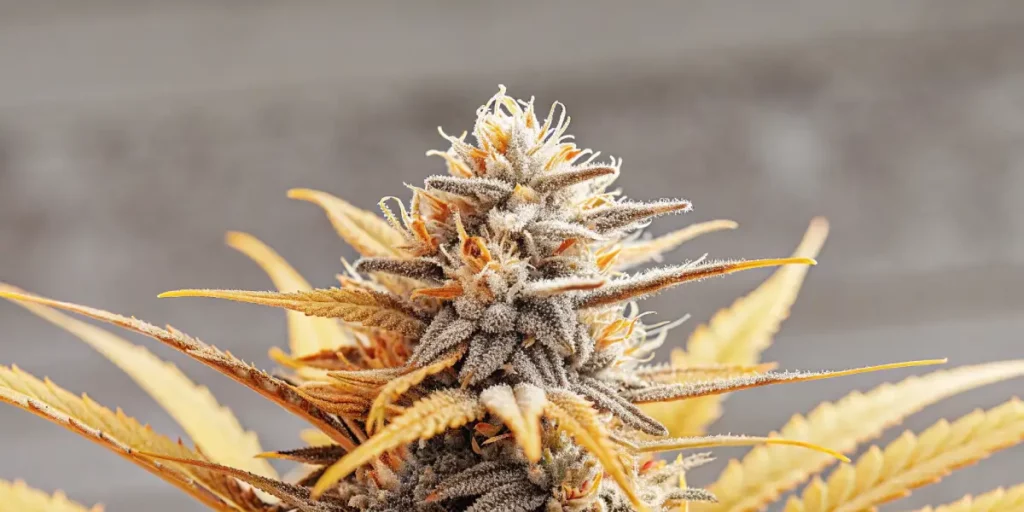
Outdoor Growing Tips
Growing ‘Mother Gorilla’ marijuana outdoors can be a rewarding experience for cultivators seeking robust and productive plants. This strain is known for its resilience and potency, making it a suitable option for outdoor environments. It’s crucial to select a location that guarantees ample sunlight exposure, as this cannabis strain thrives in environments that provide direct sunlight for most of the day. A south-facing plot is often ideal in northern hemispheres. Moreover, ensuring well-draining soil with a rich mixture of organic matter will enhance plant growth and yield.
Temperature and climate play a significant role in successful outdoor growth. This variety is more suited to warmer climates, resembling the Mediterranean, where daytime temperatures hover around 70 to 85 degrees Fahrenheit. However, it can adapt to slightly cooler temperatures, provided there is no risk of frost. Regular monitoring of weather conditions is essential, and growers should be ready to protect plants from unexpected cold snaps or excessive rainfall.
Water management is critical when cultivating outdoors. While these plants require substantial watering during their growth phases, it is important to avoid waterlogging, which could lead to root rot. Implementing a strategic watering schedule, possibly using drip irrigation or soaker hoses, can optimize water use and plant health. Mulching around the base of the plants can help retain soil moisture, reduce weed competition, and maintain soil temperature.
Pest control should also be a priority for outdoor growers. Regularly inspecting plants for signs of pests or disease is crucial. Employing natural pest control remedies, such as introducing beneficial insects or using organic sprays, can help mitigate potential issues without harming the plants. Additionally, keeping the growing area clean and free of debris minimizes the chance of pest infestations.
How to Germinate & Propagate Mother Gorilla
When it comes to germinating Mother Gorilla seeds, it’s essential to start with quality seeds from a reputable supplier to ensure healthy growth. Begin by using the paper towel method, which is highly effective for cannabis seeds. Simply moisten two paper towels with distilled water and place your cannabis seeds between them. Ensure the towels are damp but not overly wet, as excessive moisture can cause the seeds to rot. Place the paper towels in a shallow dish or between two plates to maintain darkness, and keep this setup in a warm place, ideally between 70–85°F (21–29°C). Check the seeds daily, keeping the paper towels moist, and within 3–7 days, you should see the seeds sprout with tiny taproots.
Once the seeds have germinated, it’s time to plant the sprouts in a growing medium, such as soil or a hydroponic system. Create small holes about 0.5 inches (1.3 cm) deep, and place each seedling with the root facing down. Gently cover them with soil, being careful not to damage the fragile roots. Place them under a gentle light source for about 18 hours a day, which simulates the natural daylight cycle and encourages growth. Maintain an environment with stable temperature and humidity levels to foster a strong start for your plants.
To propagate cannabis via cloning, you’ll want to choose a healthy and thriving mother plant. Using a sharp, sterilized blade, cut a 4–6 inch (10–15 cm) branch from the mother plant just below a node, where leaves meet the stem. Remove the lower leaves from the cutting and dip the cut end into rooting hormone powder or gel, which will accelerate root development. Place the cutting in a propagator or small pot filled with a light, airy medium like peat or perlite. Keep the growth medium moist but not waterlogged, and ensure adequate humidity, aiming for around 70% relative humidity, to prevent moisture loss. Within 1–2 weeks, roots should develop, allowing you to transplant the new clone into a larger pot or directly into your grow space.
By understanding the specific requirements for germinating and propagating cannabis, you can ensure a high success rate and vibrant growth. Whether starting from seeds or clones, maintaining optimal environmental conditions is key to fostering a healthy plant. Pay attention to temperature, light, and moisture levels, and your crop will thrive, providing you with a bountiful yield.
Vegetative Stage: Nurturing Your Mother Gorilla Plants
The vegetative stage is a crucial period for your cannabis plants, setting the foundation for robust growth and bountiful yields. During this phase, plants focus on developing strong roots, sturdy stems, and abundant foliage. The goal is to create an ideal environment where your plants can thrive and are well-prepared for the flowering phase. It is important to maintain optimal conditions, including light, temperature, humidity, and nutrients, to ensure that your plants grow healthy and vigorous.
Lighting plays a pivotal role in the vegetative health of cannabis strains. Using full-spectrum LED lights or high-intensity discharge lamps can provide the ideal wavelengths needed for vegetative growth. Aim to provide 18–24 hours of light per day to stimulate photosynthesis, which in turn supports vigorous growth. Additionally, ensure the lights are positioned at an appropriate height to avoid burning the plants while maximizing light exposure. Adjust the distance as the plants grow taller to maintain their health and strength.
Temperature and humidity are also critical factors during the vegetative stage. Aim for a temperature range between 70–85°F (21–29°C) and maintain humidity levels around 40–70%. These conditions will facilitate better growth and prevent issues such as mold or pest infestations. It’s essential to monitor and adjust these parameters as needed to create a stable and supportive environment. Utilizing fans or exhaust systems can help maintain airflow and manage temperature and humidity levels effectively.
Nutrient management is a key aspect of nurturing cannabis plants during the vegetative stage. Providing a balanced nutrient solution with higher nitrogen levels will support leaf and stem development. Start with a diluted concentration to prevent nutrient burn and gradually increase as the plants grow and demand more. Be mindful of the plant’s response and adjust the nutrient mix if signs of deficiencies or excesses appear. Regularly monitoring pH levels in the soil or growing medium will ensure the proper uptake of these nutrients.
Flowering: What to Expect
Flowering the Mother Gorilla cannabis strain is an exciting phase for growers, as this is when the plant begins to fully develop its potent buds. The vegetative stage is a crucial period for your cannabis plants, setting the foundation for robust growth and bountiful yields. During this phase, plants focus on developing strong roots, sturdy stems, and abundant foliage. The goal is to create an ideal environment where your plants can thrive and are well-prepared for the flowering phase. It is important to maintain optimal conditions, including light, temperature, humidity, and nutrients, to ensure that your plants grow healthy and vigorous.
Lighting plays a pivotal role in the vegetative health of cannabis plants. Using full-spectrum LED lights or high-intensity discharge lamps can provide the ideal wavelengths needed for vegetative growth. Aim to provide 18–24 hours of light per day to stimulate photosynthesis, which in turn supports vigorous growth. Additionally, ensure the lights are positioned at an appropriate height to avoid burning the plants while maximizing light exposure. Adjust the distance as the plants grow taller to maintain their health and strength.
Temperature and humidity are also critical factors during the vegetative stage. Aim for a temperature range between 70–85°F (21–29°C) and maintain humidity levels around 40–70%. These conditions will facilitate better growth and prevent issues such as mold or pest infestations. It’s essential to monitor and adjust these parameters as needed to create a stable and supportive environment. Utilizing fans or exhaust systems can help maintain airflow and manage temperature and humidity levels effectively.
Nutrient management is a key aspect of nurturing cannabis plants during the vegetative stage. Providing a balanced nutrient solution with higher nitrogen levels will support leaf and stem development. Start with a diluted concentration to prevent nutrient burn and gradually increase as the plants grow and demand more. Be mindful of the plant’s response and adjust the nutrient mix if signs of deficiencies or excesses appear. Regularly monitoring pH levels in the soil or growing medium will ensure the proper uptake of these nutrients.
Fertilizers & Nutrient Schedule
Feeding Mother Gorilla, a hybrid strain renowned for its resilience and vigor, requires understanding its specific nutritional needs to optimize growth and yield. Like all cannabis plants, this strain thrives on a balanced diet of essential nutrients, which include macronutrients like nitrogen (N), phosphorus (P), and potassium (K), as well as a variety of micronutrients such as calcium, magnesium, and sulfur. During the vegetative stage, the plant demands higher levels of nitrogen to promote strong leaf growth and robust stem development. It’s crucial to employ fertilizers that cater to these requirements, ensuring your plants are healthy and primed for the flowering phase.
As the plants transition into the flowering stage, the focus should shift to nutrients that support bud development. Phosphorus and potassium become more critical at this stage, aiding in the production of dense, resinous buds. A fertilizer with a higher P-K ratio is recommended to support the plant’s energy needs and enhance the overall quality of the cannabis flowers. Additionally, implementing organic amendments such as worm castings or bat guano can naturally bolster the nutrient profile and promote microbial activity in the soil, enhancing nutrient uptake and contributing to the vitality of your plants.
Creating a nutrient schedule is pivotal to preventing common issues like nutrient burn or deficiencies. Start with a lower concentration of nutrients, gradually increasing the dosage as the plant matures and adjusts to the feeding regimen. Typically, feeding should occur every other watering to allow the soil to breathe and prevent nutrient buildup. Employ tools like a pH meter and EC/TDS meter to monitor the soil’s nutrient solution, ensuring that it remains within the ideal pH range of 6.0–7.0 and proper electrical conductivity levels. This detailed approach will help optimize the health and productivity of your crop, leading to bountiful harvests.
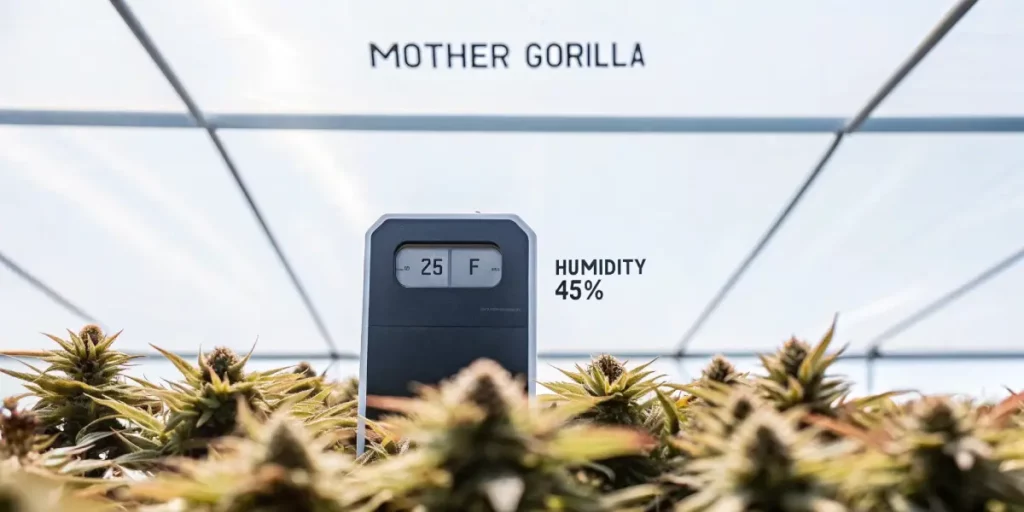
Pest and Disease Prevention for Healthy Cannabis Plants
This notably high-yielding and resilient cannabis strain requires a strategic approach to pest and disease prevention to maintain its health and potency. An integrated pest management plan is essential for cultivating strong, healthy plants. This involves regular monitoring, biological control measures, and adopting preventive practices to minimize potential threats from pests and diseases that could jeopardize growth and yield.
One critical step in pest prevention is maintaining a clean and hygienic growing environment. Regularly clean and disinfect tools, pots, and surfaces to remove any potential sources of infection or infestation. Keeping the grow area clean reduces the likelihood of fungus gnats, spider mites, and other pests taking hold. Additionally, using pest-resistant growing mediums and ensuring proper drainage can prevent the development of root rot and other soil-borne diseases.
Biological controls, such as beneficial insects, can also play a significant role in maintaining plant health. Introducing predatory insects like ladybugs or praying mantises helps control populations of common pests like aphids and whiteflies without the need for chemical pesticides. This method is not only environmentally friendly but also helps maintain a balanced ecosystem within the grow area, ensuring Mother Gorilla plants can thrive without stress.
Implementing preventive measures, such as selecting disease-resistant strains and using organic, neem-based products, can further safeguard your cannabis plants. Regularly inspect plants for early signs of diseases such as powdery mildew or botrytis. Early detection and immediate action are crucial to managing disease outbreaks effectively. Prune plants to promote air circulation, reducing humidity levels that can encourage fungal diseases.
Harvesting & Drying Mother Gorilla the Right Way
Harvesting Mother Gorilla, a strain revered for its potent, uplifting effects, requires precise timing and technique to ensure the plant’s full potential is achieved. The ideal moment to harvest is when approximately 70% of the pistils have darkened and curled. This signifies peak potency. Trichomes, tiny resin glands on the buds, should appear milky white under magnification; this indicates the optimal THC levels. Be gentle yet decisive when cutting, leaving some length on the stalks to simplify the handling and hanging of the plants for drying later on.
Avoid harvesting during damp or humid weather to prevent mold formation. Once harvested, handle the plants with care to maintain their precious trichomes. It’s advisable to trim excess leaves immediately after harvesting while they are still pliable. This involves removing the larger fan leaves, followed by the smaller sugar leaves. Proper trimming not only facilitates drying but also enhances the final product’s appearance and flavor profile. This process maximizes the exposure of the buds during the drying phase, which is crucial for developing a smooth smoke and rich aroma.
The drying process is critical in ensuring that the buds do not retain excessive moisture, which could lead to mold growth. Hang the trimmed plants upside down in a dark, ventilated room, maintaining a relative humidity of 45–55% and temperatures between 60–70°F (15–21°C). This environment will allow for a gradual drying process, which typically takes about 7 to 14 days. Regularly monitor the drying conditions, ensuring that air is gently circulated without directly blowing on the buds.
Test the dryness by attempting to bend a small branch; it should snap cleanly rather than bend. This indicates that the moisture content is appropriate for moving to the curing phase. If the branch doesn’t snap, more drying time is needed. Remember that patience during the drying phase can significantly affect the quality of the smoke. Properly dried buds will have a well-preserved aroma and savory taste, enhancing the overall cannabis experience.
Strain Type: Indica, Sativa or Hybrid?
Mother Gorilla is a remarkable strain known for its balanced characteristics, embodying the best traits of both its Indica and Sativa lineage. This strain is categorized as a hybrid, which means it combines the genetics and qualities of both Indica and Sativa varieties. This hybrid nature allows this strain to deliver a versatile range of effects, making it a popular choice among enthusiasts who seek a balanced experience. The hybrid makeup results in a unique profile that appeals to a variety of preferences and needs.
The hybrid nature is primarily due to its parentage, which includes Gorilla Glue 4 (also known as GG4) and Reina Madre, a Spanish Sativa known for its uplifting properties. GG4, with its Indica dominance, contributes to the strain’s relaxing and sedative effects, typical of Indica strains. On the other hand, Reina Madre adds to the uplifting, cerebral, and energetic effects characteristic of Sativa strains. The careful combination of these parent strains results in a perfectly balanced hybrid that provides users with a harmonized cannabis experience.
For those looking to cultivate this variety, understanding its hybrid nature is essential for tailoring the growing environment. This strain typically grows with the structure and vigor of a Sativa, resulting in tall plants that may require height management and support to optimize growth. Meanwhile, the Indica properties contribute to its dense bud structure and a relatively shorter flowering period, making it a rewarding strain for those who can balance the two. Growers can expect a robust plant that thrives in both indoor and outdoor environments, with the potential to produce high yields of resin-rich buds.
In essence, this hybrid offers the best of both worlds, encapsulating the potent, relaxing depth of Indicas with the inspiring, euphoric lift of Sativas. This makes it an excellent choice for both recreational and medicinal users. Whether you are looking for a strain to enhance creativity or to unwind after a stressful day, its hybrid properties provide a gratifying and well-rounded experience. As such, it stands as a testament to the potential that lies in hybrid strains, bringing together the most favorable attributes of its parental lineage.
Why Grow Mother Gorilla? Key Benefits for Cultivators
Mother Gorilla is a highly sought-after cannabis strain, known for its unique blend of genetics that promise an enriching cultivation experience. This hybrid strain is the result of crossing the legendary Gorilla Glue #4 with Reina Madre, creating a plant that boasts both potent effects and impressive growth characteristics. One of the primary reasons cultivators choose this strain is due to its exceptional resin production, making it a favorite among those who aim to produce high-quality cannabis concentrates. The substantial trichome coverage not only enhances the plant’s potency but also adds to its visual appeal, making it a rewarding plant to grow.
Another key benefit of cultivating this variety is its resilience and adaptability, which make it suitable for a wide range of growing conditions. Whether grown indoors or outdoors, this strain demonstrates remarkable vigor and resistance to common pests and diseases, reducing the challenges associated with cannabis cultivation. Its sturdy genetics allow it to thrive in various climates, providing breeders with a reliable crop in diverse environmental conditions. This reliability is especially valuable for novice growers who may not yet have perfected their grow-room conditions, as well as for experienced cultivators seeking a low-maintenance yet rewarding strain.
Additionally, this cultivar is celebrated for its impressive yield potential, particularly when given appropriate care and attention. Indoors, cultivators can expect to harvest a bountiful crop after around 9–10 weeks of flowering, while outdoor growers typically see results by early October. The robust yields are complemented by a rich terpene profile that features earthy, piney, and sweet aromas, ensuring a full sensory experience. This combination of quantity and quality makes it a highly advantageous choice for growers looking to optimize both their harvest weight and the overall sensory appeal of their final product.
Potential Challenges When Growing Mother Gorilla
Growing Mother Gorilla cannabis can be both a rewarding and challenging endeavor for cultivators. One major challenge is the requirement for a controlled environment, as this strain thrives best in specific conditions. This strain prefers warmer temperatures and stable humidity levels. Failing to provide these conditions could lead to stunted growth or increased susceptibility to pests and diseases. It is crucial for growers to invest in proper ventilation and climate control systems to ensure optimal growing conditions.
Another challenge is the plant’s sensitivity to nutrient levels. Like many other cannabis strains, it requires a balanced supply of nutrients throughout its growth cycle. Overfeeding can lead to nutrient burn, characterized by yellowing leaves and, in severe cases, plant death. On the other hand, underfeeding can stunt growth and reduce overall yield. Hence, growers must be vigilant in monitoring for signs of nutrient deficiencies or excesses and adjust their feeding schedules accordingly.
This variety also demands careful attention during its flowering phase. With a relatively short flowering time—around 8 to 9 weeks—growers have a tight timeframe to address potential issues such as mold or bud rot, which can be prevalent in dense buds. Ensuring adequate air circulation and maintaining low humidity levels during flowering can help prevent these problems. Regular inspections and maintenance are crucial to catching any issues early and ensuring a successful harvest.
Additionally, without proper training and pruning techniques, this plant can exhibit excessive vertical growth, which may be challenging for those with limited space. Implementing methods such as topping, fimming, or using a Screen of Green (ScroG) setup can help manage the plant’s size and optimize light exposure across the canopy. While these techniques are effective, they require skill and experience to execute properly, presenting another layer of complexity for growers.
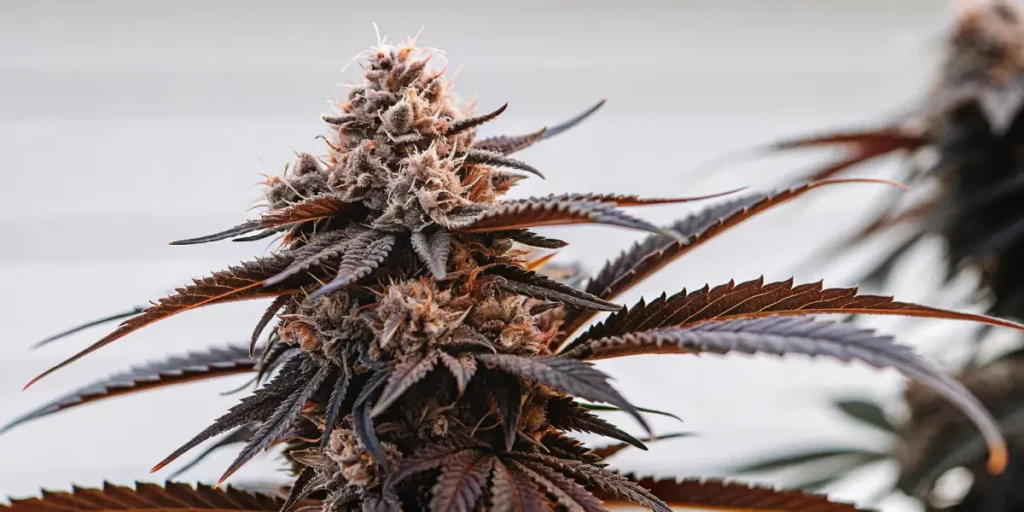
Is Mother Gorilla Worth Buying? Here’s What You Need to Know
When considering whether to invest in the Mother Gorilla cannabis strain, there are several key aspects to keep in mind. Known for its balanced genetics and impressive resilience, this hybrid strain is an appealing choice for both novice and experienced growers. Crafted from the potent genetics of Gorilla Glue 4 and Reina Madre, it delivers an invigorating yet calming profile with a THC content that can reach up to 23%. Therefore, it holds the promise of offering a robust and enjoyable growing experience as well as a satisfying harvest.
One of the standout features of this variety is its ease of cultivation. It is particularly well-suited for growers who are just starting their cannabis cultivation journey due to its forgiving nature. This strain thrives in a variety of conditions and can be successfully cultivated both indoors and outdoors. With an indoor flowering time of approximately 8 weeks, it’s a relatively quick producer, allowing for multiple harvests within a year. Its resilience against common molds and pests further adds to its attractiveness, reducing the stress and effort required to maintain a healthy crop.
In addition to its ease of growth, this cultivar offers a rewarding yield, making it a cost-effective choice for growers. Indoor plants can produce up to 500 grams per square meter, while outdoor plants can yield well over 600 grams per plant under optimal conditions. The buds produced are dense and resinous, indicative of their Gorilla Glue parentage, and are known for their spectacular aroma, combining earthy and fruity notes with hints of chocolate and fuel.
Beyond its growing characteristics, this strain provides a unique and pleasurable consumption experience. Its balanced blend of sativa and indica effects results in a high that is both uplifting and relaxing. This makes it versatile for both daytime and evening use, whether you’re seeking creative motivation or relaxation after a busy day. Its complex flavor profile and potent effects have made it popular among recreational users, while its therapeutic benefits, such as stress relief and mood enhancement, appeal to medical users as well.
FAQs
What are the best growing conditions for the Mother Gorilla strain?
Mother Gorilla thrives in warm, stable environments with daytime temperatures between 70–85°F (21–29°C) and relative humidity around 40–50% during flowering. This hybrid responds best to nutrient-rich soil with balanced drainage and a pH of 6.0–7.0. Consistent airflow, strong LED lighting, and moderate pruning during the vegetative phase help the Mother Gorilla strain develop dense, resinous buds with optimal potency and aroma.
How long does it take for Mother Gorilla to flower?
Under optimal indoor conditions, the Mother Gorilla strain typically flowers in 8 to 9 weeks, though outdoor growers can expect harvests by early to mid-October. Keeping humidity below 50% and ensuring steady airflow during this phase reduces the risk of mold and enhances trichome production. Monitoring trichomes for milky-to-amber coloration helps identify the perfect harvest window for maximum THC content and terpene richness.
What nutrients work best for cultivating Mother Gorilla plants?
During the vegetative stage, the Mother Gorilla strain benefits from nitrogen-rich fertilizers to support lush leaf and stem development. As flowering begins, shift to a nutrient blend higher in phosphorus and potassium to promote dense bud formation. Organic boosters like bat guano, seaweed extract, or worm castings improve soil vitality and terpene complexity. Always maintain the soil pH between 6.0 and 7.0 to avoid nutrient lockout and ensure healthy growth.
Can I grow Mother Gorilla outdoors successfully?
Yes. The Mother Gorilla strain performs exceptionally well outdoors in sunny, Mediterranean-like climates with long, warm days. Choose a south-facing plot with nutrient-dense, well-drained soil to support vigorous root growth. Water deeply but infrequently to avoid root rot, and apply mulch to retain soil moisture. Its natural resilience and pest resistance make it suitable for both novice and experienced outdoor cultivators aiming for large, high-quality yields.
What makes the Mother Gorilla strain unique among hybrids?
Mother Gorilla stands out for its balanced hybrid genetics, derived from Gorilla Glue #4 and Reina Madre, offering a harmonious blend of uplifting cerebral energy and relaxing physical calm. Its buds are dense, trichome-laden, and rich in earthy, sweet, and pine-like terpenes. With THC levels reaching up to 23%, this strain delivers a potent yet refined experience, making it ideal for growers seeking a versatile plant that combines resilience, yield, and top-tier effects.

